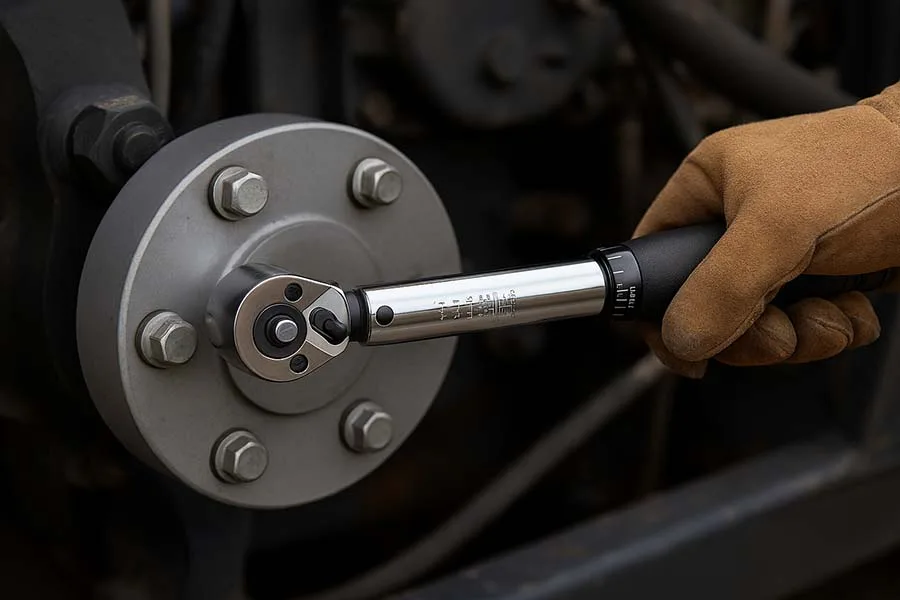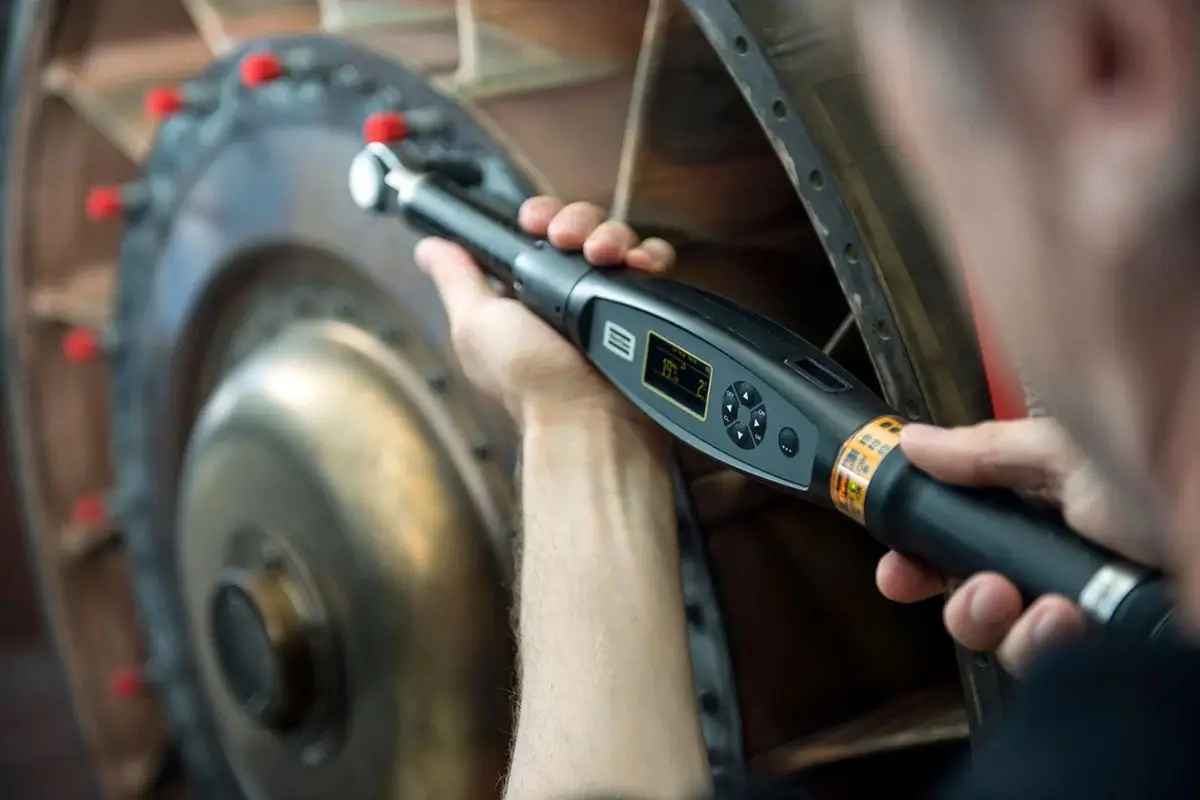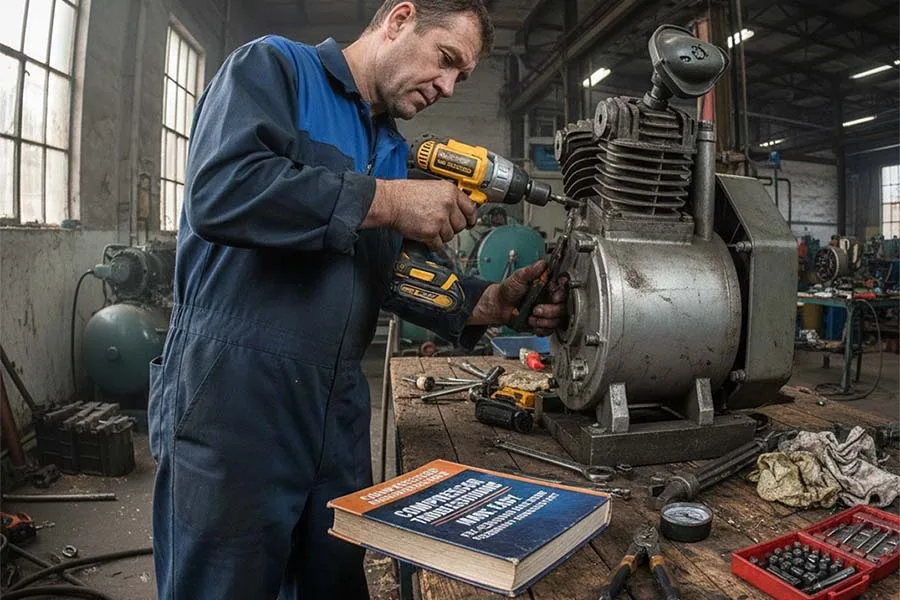Introduction: Why Choosing the Right Torque Wrench Matters
Ever tried tightening a bolt and wondered, “Is this too much, or not enough?” That’s where a torque wrench comes in. A torque wrench isn’t just another tool in your box – it’s the difference between precision and guesswork. Using the right one ensures safety, prevents over-tightening or stripping, and extends the life of both your tools and equipment.
Whether you’re a mechanic, engineer, DIY enthusiast, or plant technician, knowing how to choose the right torque wrench can save you time, money, and a whole lot of frustration.
Step-by-Step Guide: How to Choose the Right Torque Wrench
Step 1: Identify the Torque Requirements
- Check the manufacturer’s specifications for the torque value required.
- Common applications:
- Car wheel lug nuts: 80–100 ft-lb
- Bike components: 5–10 Nm
- Industrial equipment: varies widely, often 200+ Nm
Pro tip: Always select a wrench that comfortably covers the required range, with a bit of headroom.
Step 2: Understand the Types of Torque Wrenches
There’s no one-size-fits-all. Here are the main types:
- Beam Torque Wrench – Simple, affordable, and durable, but requires line-of-sight.
- Click Torque Wrench – Most popular; “clicks” when you reach the set torque.
- Electronic/Digital Torque Wrench – Highly accurate, with digital display; ideal for precision work.
- Hydraulic Torque Wrench – Heavy-duty, industrial-grade, often used in construction and energy sectors.
Choose based on precision needs, frequency of use, and budget.
Step 3: Consider Accuracy and Calibration
- Look for models with an accuracy of ±3–4%.
- Ensure the wrench can be recalibrated regularly (especially if you use it often).
Step 4: Match Drive Size to Your Job
Torque wrenches come in different drive sizes:
- 1/4-inch drive – Small jobs (electronics, bikes).
- 3/8-inch drive – Versatile, great for cars and motorcycles.
- 1/2-inch drive – Standard for larger automotive/industrial jobs.
- 3/4-inch and 1-inch drive – Heavy-duty, industrial applications.
Step 5: Don’t Forget Ergonomics and Comfort
If you’ll be using the wrench frequently, a comfortable handle grip and weight balance will make a big difference.
Step 6: Set Your Budget Wisely
- Basic beam types start at $20–$40.
- Click types range from $50–$150.
- Digital models often cost $150+.
- Hydraulic tools can exceed $1,000.
Tip: Don’t overspend if you only need it for occasional use, but don’t underinvest if accuracy and safety are critical.
Common Mistakes and How to Avoid Them
- ❌ Using the wrong size drive – leads to stripped bolts.
- ❌ Skipping calibration checks – reduces accuracy.
- ❌ Over-torquing after the click – “one more push” can damage threads.
- ❌ Using a torque wrench as a breaker bar – never do this; it ruins calibration.
✔ Always use the right size, stop at the click, and store your tool properly.
Troubleshooting: What If Things Go Wrong?
- The wrench doesn’t click → Check calibration or replace if worn.
- Bolt stripped despite correct torque → Check if bolt quality was poor or if lubricant affected torque reading.
- Inconsistent readings → Ensure even hand pressure and avoid jerky movements.
- Digital display won’t turn on → Replace batteries or check connections.
Safety Warnings & Best Practices
- Always start tightening with a regular wrench, then finish with the torque wrench.
- Never exceed the wrench’s maximum torque rating.
- Store at the lowest setting to preserve calibration.
- Wear gloves and eye protection when working on high-torque applications.
Interesting & Lesser-Known Facts
Interesting Fact: The torque wrench was invented in 1918 by Conrad Bahr, an engineer at New York City’s Water Department, to stop workers from overtightening bolts.
Lesser-Known Fact: Temperature changes can slightly affect torque wrench accuracy – especially in digital models. Always store them at room temperature for best results.
How to Choose the Right Torque Wrench for Your Job FAQ
Want To Learn More About Torque Wrenches?
Find out more information on torque wrenches in the following articles:
- The Ultimate Guide to Torque Wrenches
- How to Use a Torque Wrench in the Automotive Industry
- Automotive Torque Wrench Buying Guide 2025
- Digital vs. Mechanical Torque Wrenches: Which Is Better?
- Best Digital Torque Wrench in 2025
- How to Calibrate a Torque Wrench: Step-by-Step Guide
- Top Torque Wrench Manufacturers Reviewed (2025 Edition)
- How to Set Up a Torque Wrench Correctly (Step‑by‑Step)
- How to Read a Torque Wrench Correctly?
- Torque Wrench Maintenance: How to Extend Its Life
- 5 Common Mistakes When Using a Torque Wrench
- The Future of Torque Wrenches: Smart Tools & Automation 2025
- Aerospace Fasteners: Precision, Weight & Vibration Resistance
- Torque Wrench Safety: Prevent Overtightening & Bolt Failures
- Torque Wrench Accuracy Explained | Understanding Tolerance in Practice
- Digital Torque Wrench Calibration – Step-by-Step Guide 2025
- Snap-On Digital Torque Wrenches (2025) – Premium Review
- Proto Torque Wrenches: Complete Buying Guide & Pro Review (2025 Edition)
- Best Smart Tightening Tools for Industrial Assembly (2026 Guide)
Conclusion: Ready to Choose Your Torque Wrench?
Selecting the right torque wrench isn’t just about tools—it’s about precision, safety, and confidence in your work. By following this step-by-step guide, you’ll know exactly which wrench to pick, how to avoid common mistakes, and how to keep it in top shape.
✅ Now it’s your turn: Which torque wrench do you use, and why? Share your experiences in the comments—and don’t forget to share this article with colleagues or friends who might find it helpful!





